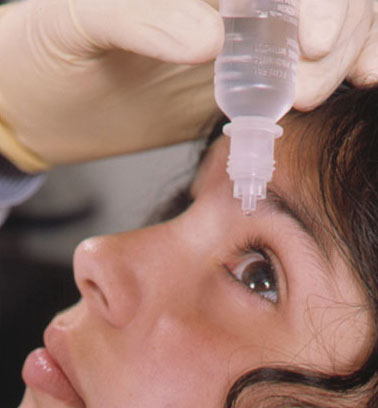 |
This study found that children had an SE difference of less than 1D of myopia using non-cycloplegic vs. cycloplegic autorefraction. Photo: Joseph Sowka, OD. Click image to enlarge. |
In an attempt to evaluate the differences between autorefraction measurements with and without cycloplegia, researchers recently found that 75% of school-aged patients had a spherical equivalent (SE) difference of less than 1D of myopia using non-cycloplegic compared with cycloplegic autorefraction.
This cross-sectional, retrospective study included 11,119 individuals (52.4% were female) between the ages of three and 22 (mean age 10.8) who had same-day non-cycloplegic and cycloplegic autorefractions of the right eye.
Demographic information including age, sex and race/ethnicity was collected during the eye exam. Autorefraction was performed before and after cycloplegia. Myopia defined as at least -0.50D SE, hyperopia as at least +0.50D SE and astigmatism as at least 1.00D cylinder were determined using both non-cycloplegic and cycloplegic autorefractions. Factors associated with at least 1.00D more myopic SE or at least 0.75D cylindrical difference by non-cycloplegic autorefraction were assessed using logistic regression models.
The mean SE refraction was -0.87D for non-cycloplegic and -0.23D for cycloplegic refraction, with non-cycloplegic SE measuring 0.65D more myopic. After adjusting for demographic factors and refractive error, individuals with ≥1.00D more myopic SE refraction by non-cycloplegic autorefraction (25.9%) were more likely to be younger than five (odds ratio; OR=1.45) and five to 10 years old (OR=1.32) compared with those 10 to 15 years old. This phenomenon was more likely to be observed in Hispanics (OR=1.23) and individuals with hyperopia (OR: 1.56 to 5.64). Individuals with ≥0.75D cylindrical difference (5.1%) between refractions were more likely to be <five years of age, male and have mild/moderate/high myopia or moderate/high hyperopia.
“Understanding measurement differences obtained for refractive error and associated factors may provide useful information for future studies or programs involving refraction in school-aged children,” the study authors concluded in their paper.
Guo X, Shakarchi AF, Block SS, et al. Non-cycloplegic compared with cycloplegic refraction in a Chicago school-aged population. Ophthalmology. March 1, 2022. [Epub ahead of print]. |


